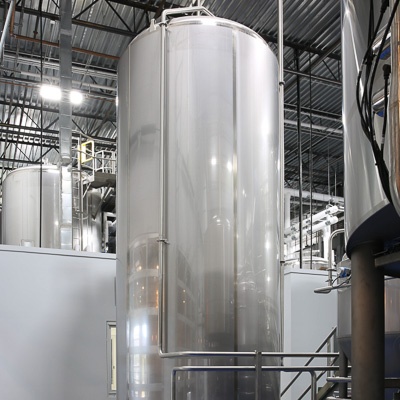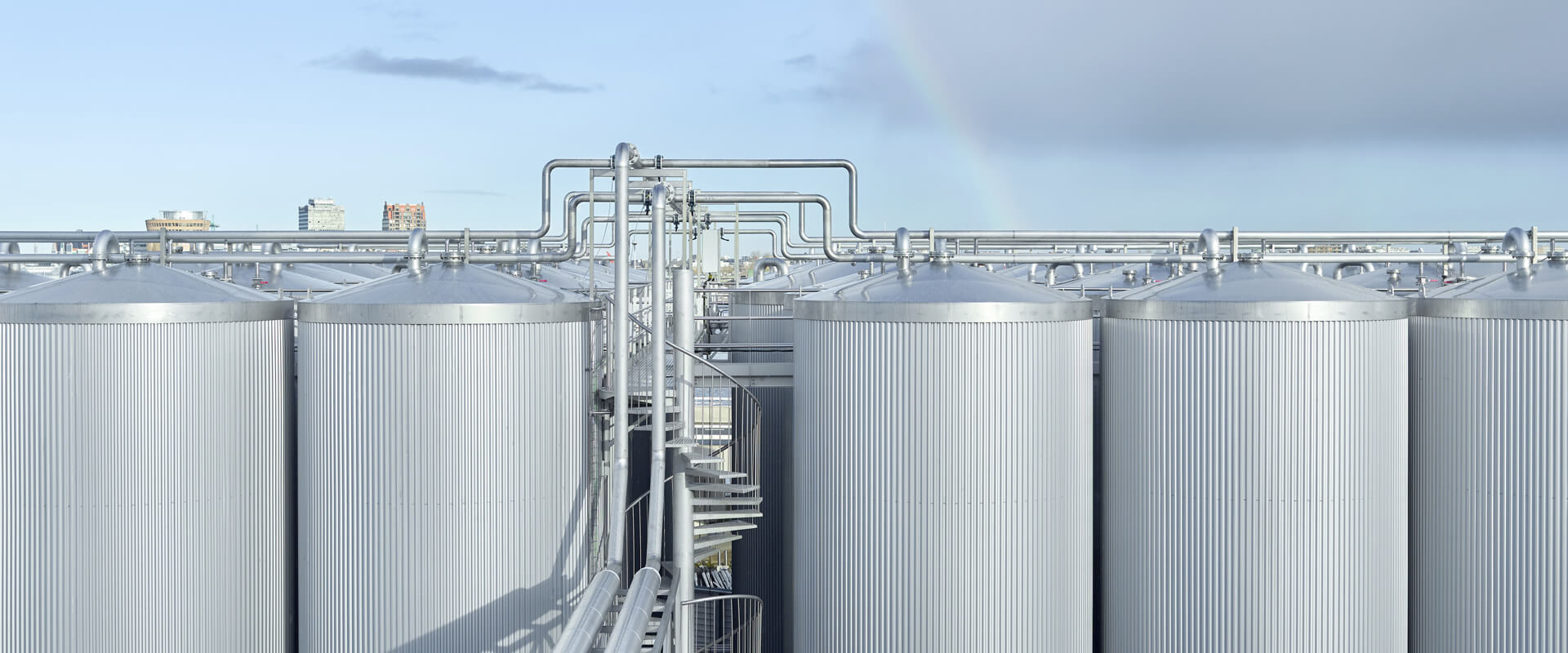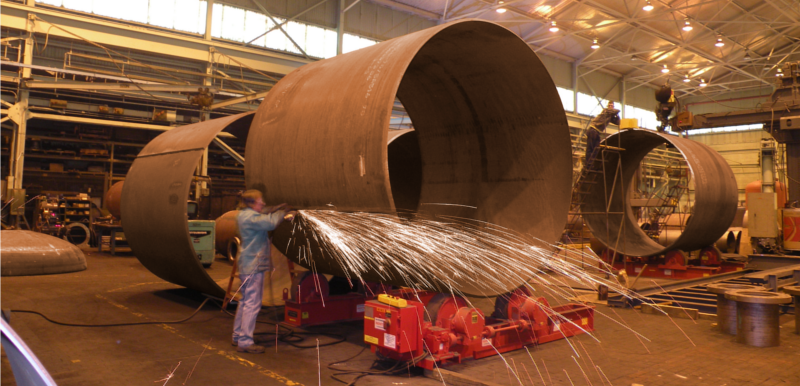Leading Technologies in Storage Tank Manufacturing: Increasing Effectiveness and Sustainability
The landscape of storage tank manufacturing is undergoing considerable transformation as sector leaders significantly adopt developments focused on improving both effectiveness and sustainability. Trick advancements, consisting of making use of clever technologies and innovative products, are redefining functional criteria while attending to ecological concerns. Furthermore, modular tank layouts and environment-friendly manufacturing procedures existing new opportunities for source optimization. As these patterns proceed to evolve, the ramifications for sector techniques and lasting sustainability goals benefit better expedition. What certain technologies are establishing the phase for this paradigm change?
Advanced Materials for Toughness
The evolution of storage tank manufacturing is increasingly driven by the combination of advanced materials created to enhance toughness and performance. Commonly, tank were created mostly from carbon steel, which, while reliable, is vulnerable to deterioration and structural destruction in time. Texas Oil & Gas Storage Tank Fabrication Authority. Recent developments have actually seen the intro of high-performance alloys, composite products, and polymers that provide exceptional resistance to ecological factors and chemical exposure
Stainless steel and duplex alloys are now usual in applications requiring heightened rust resistance, specifically in aquatic or chemical storage space settings. Moreover, composite products, such as fiberglass-reinforced plastics, offer an outstanding strength-to-weight ratio while minimizing upkeep costs because of their non-corrosive nature. These developments not just prolong the life-span of storage containers yet likewise enhance their functional performance.
In addition, the adoption of nanotechnology in layers is showing useful in further enhancing the safety properties of storage tank surface areas. These improvements not just decrease the frequency of fixings and inspections but additionally contribute to sustainability by reducing source intake and waste. As the market continues to introduce, the emphasis on innovative materials will remain a cornerstone of storage tank manufacturing, ensuring safety and security and reliability sought after applications.
Smart Monitoring Technologies
Technologies in smart surveillance modern technologies are revolutionizing the monitoring and maintenance of tank (Texas Oil & Gas Storage Tank Fabrication Authority). These developments take advantage of the Web of Points (IoT), man-made intelligence (AI), and advanced sensing unit technologies to boost functional effectiveness and safety and security. By incorporating real-time information collection, operators can keep an eye on tank problems, such as temperature, pressure, and liquid levels, with unmatched precision
Smart surveillance systems allow anticipating upkeep, allowing for timely interventions prior to potential failings take place. This decreases downtime and minimizes maintenance expenses, as drivers can address concerns based upon data-driven insights instead than reactive procedures. Furthermore, these innovations enhance safety and security methods by giving informs for leakages, overfills, or architectural weaknesses, greatly alleviating ecological threats.
In addition, cloud-based platforms promote central surveillance throughout multiple places, enabling drivers to make informed decisions swiftly. Enhanced information analytics additionally add to maximizing stock management, guaranteeing that sources are made use of successfully.
As regulative requirements for ecological conformity ended up being increasingly rigid, smart tracking technologies play an important duty in making sure storage space containers fulfill these requirements. In general, the fostering of these innovations not just boosts functional effectiveness yet additionally promotes sustainability in storage tank manufacturing and administration.
Modular Tank Designs
Modular container styles are revolutionizing the storage tank market by supplying enhanced personalization choices that accommodate particular client demands. These designs not just help with tailored solutions yet likewise give space-saving arrangements, making them perfect for varied environments. As sectors seek efficiency and versatility, modular tanks provide an engaging alternative to typical storage options.
Improved Personalization Options
As suppliers endeavor to fulfill diverse customer needs, boosted modification choices in storage tank style have come to be significantly widespread. Modular tank styles exhibit this fad, enabling tailored configurations that fit numerous operational demands. By utilizing modular elements, suppliers can create tanks of different dimensions, shapes, and functionalities, making certain compatibility with details applications.
These customizable containers can be adapted to hold different sorts of fluids, consisting of unsafe materials, without compromising safety or effectiveness. In addition, modular designs assist in scalability, allowing companies to expand their storage space ability effortlessly as need grows. This adaptability not just enhances space utilization yet also minimizes the overall lifecycle expenses connected with storage tank installation and upkeep.
Additionally, improved customization options reach advanced attributes such as incorporated monitoring systems, insulation, and specialized finishings that boost durability and efficiency. By supplying a variety of choices, producers equip customers to choose layouts that line up with their operational goals and sustainability initiatives.
Inevitably, the rise of enhanced customization options in storage tank manufacturing underscores a commitment to technology, allowing markets to react properly to developing market needs while boosting total performance and environmental stewardship. (Texas Oil & Gas Storage Tank Fabrication Authority)
Space-Saving Configurations
Maximizing room performance has actually become a crucial factor to consider in storage tank layout, especially with the introduction of modular tank configurations. These ingenious layouts permit for the setting up of storage tanks in different setups, giving adaptability and versatility in space-constrained environments. Modular containers can be easily delivered and mounted, making them excellent for sectors requiring on-site storage space solutions.
Making use of modular designs not only optimizes space yet likewise enhances scalability. Organizations can begin with a smaller sized system and expand their storage space ability by including added components as demand increases. This incremental method permits and lowers in advance costs for better resource administration. Furthermore, modular storage tanks can be personalized regarding size, product, and configuration, dealing with certain functional requirements.
Sustainability is also a vital advantage of modular storage tank arrangements. By making use of standardized elements, producers can lower waste throughout production and streamline the supply chain. Additionally, these storage tanks commonly feature improved insulation and energy-efficient layouts, causing reduced operational expenses.
Eco-Friendly Manufacturing Processes
As the need for eco liable manufacturing grows, the storage tank industry is welcoming green procedures to enhance sustainability. This consists of the option of lasting materials, the execution of energy-efficient production methods, and the adoption of waste decrease approaches. By focusing on these techniques, makers can considerably lower their environmental impact while preserving product high quality and efficiency.
Sustainable Material Choice
Sustainable material option is a foundation of green manufacturing processes in the storage tank industry. The selection of materials profoundly affects not only the ecological impact of manufacturing however also the longevity and efficiency of the storage tanks themselves. Using recycled or sustainably sourced materials, such as innovative composites and high-strength alloys, decreases the need for virgin resources and decreases waste.
Moreover, the combination of products with reduced embodied energy contributes to a decrease in greenhouse gas emissions throughout the manufacturing lifecycle. As an example, bio-based polymers and safe finishes are obtaining traction, providing both durability and ecological benefits. These materials not only satisfy the rigorous requirements for security and efficiency but additionally improve the containers' resistance to corrosion, lengthening their service life and reducing upkeep prices.
Producers are increasingly embracing life cycle analysis (LCA) approaches to assess the environmental impact of material choices. By focusing on products that are naturally degradable or recyclable, the storage tank sector is taking considerable strides toward a circular economy. This dedication to lasting material selection not only lines up with governing requirements but likewise meets the expanding need from eco aware consumers and companies alike.
Energy-Efficient Production Strategies
In the mission for reducing ecological effect, energy-efficient production strategies have actually become necessary components in the storage tank manufacturing industry - Oil & Gas Storage Tank Fabrication. These methods not just reduce power consumption however likewise boost operational effectiveness and lower general manufacturing expenses
One considerable method is the fostering of innovative manufacturing innovations, such as computer system mathematical control (CNC) equipments, which maximize accuracy and decrease waste during the manufacture procedure. Automation and robotics have actually also acquired importance, permitting for structured operations that call for much less energy and workforce. The combination of renewable energy sources, like solar and wind power, into making plants has come to be significantly typical, making it possible for business to minimize their dependence on fossil fuels.
Furthermore, applying power management systems aids maximize and keep track of power usage throughout the manufacturing cycle, identifying areas for improvement and making sure conformity with environmental criteria. These systems can result in considerable reductions in energy consumption, contributing to a more lasting manufacturing procedure.
Waste Reduction Techniques
The implementation of energy-efficient production techniques normally causes an increased focus on waste decrease methods in storage tank manufacturing. Business are increasingly taking on methods that reduce product waste while maximizing resource use. Secret methods include lean manufacturing concepts, which streamline procedures to get rid of inadequacies and lower excess inventory.
Recycling and recycling products is an additional essential approach. Many manufacturers are currently spending in modern technologies that assist in the improvement of scrap metal and various other spin-offs during manufacturing. This not only preserves basic materials however additionally lowers disposal costs and environmental influence.
Makers are welcoming digital technologies such as IoT and data analytics to keep track of and manage waste extra effectively. These devices can identify waste generation points and give insights for continual renovation. In addition, carrying out closed-loop systems allows business to make use of waste products as inputs for new procedures, fostering a circular economic situation.
The pursuit of accreditations such as ISO 14001 highlights the commitment to sustainability and waste decrease, placing firms favorably in an open market. By systematically attending to waste, storage tank makers can accomplish both environmental and economic benefits, driving onward a more sustainable industry.
Energy-Efficient Insulation Solutions
As makers seek to enhance the efficiency of tank, they are turning to cutting-edge energy-efficient insulation remedies that significantly minimize thermal losses. One noticeable pattern is using advanced products such as aerogels and vacuum-insulated panels, which supply remarkable thermal resistance while being lightweight. These materials not only decrease warm transfer but additionally add to a reduced overall impact and lower installment expenses.

Implementing these energy-efficient insulation options not only results in considerable energy cost savings yet likewise aligns with sustainability goals by decreasing greenhouse gas discharges connected with heating and cooling down procedures. As the market advances, the emphasis on insulation technology will certainly remain pivotal in making certain that storage tanks fulfill modern-day efficiency criteria while contributing favorably to ecological sustainability.


Automation in Tank Production
Innovations in automation technology are revolutionizing storage tank production, greatly improving efficiency and precision. Automated systems now play a vital role in different stages of manufacturing, from product handling to welding and setting up. These modern technologies minimize human intervention, thereby reducing the chance of mistakes and raising throughput.
Robot systems are significantly made use of for tasks such as welding and surface area therapy, guaranteeing constant quality and minimizing manufacturing time. Automated top quality control systems employ advanced sensing units and equipment understanding algorithms to detect flaws in actual time, permitting makers to attend to issues without delay and keep high standards.
Additionally, the assimilation of Net of Points (IoT) technology in container manufacturing promotes real-time tracking of machinery and processes. This connection brings about improved functional insights, enabling producers to optimize operations and maintenance timetables. Predictive analytics can anticipate tools failings, further improving reliability and decreasing downtime.
Boosted Security Features
Incorporating enhanced safety attributes into storage tank manufacturing has become a critical focus for market leaders. As the demand for safe and reliable storage services expands, producers are embracing ingenious innovations and layout principles to alleviate risks connected with hazardous products.
One significant development is the unification of sophisticated leak detection systems. These systems make use of sensing units that keep an eye on tank honesty, enabling very early recognition of leaks and avoiding ecological contamination. Additionally, making use of double-walled tanks adds an added layer of protection, making sure that if the internal wall stops working, the outer wall surface has any kind of possible spills.
Manufacturers are implementing pressure relief valves and overfill prevention systems to address prospective overpressurization and overflow scenarios. These mechanisms are made to trigger automatically, greatly reducing the danger of devastating failings.
Additionally, the combination of smart tracking innovations enables real-time information collection and evaluation. This ability enables positive maintenance and quick feedback to any safety and security concerns, guaranteeing compliance with sector laws.
Regularly Asked Concerns
How Do Storage Tank Innovations Effect Overall Operational Prices?
Innovations in storage tank manufacturing substantially minimize functional expenses by improving performance, reducing maintenance demands, and maximizing resource usage. These developments lead to decrease power intake and prolonged equipment life expectancy, eventually improving total economic efficiency for companies.

What Industries Benefit The Majority Of From Advanced Storage Tank Technologies?
Industries such as oil and gas, chemicals, water treatment, and food handling considerably take advantage of advanced storage tank innovations. These developments enhance safety and security, maximize resource management, and enhance functional performance, inevitably lowering prices and ecological effect.
Are There Specific Accreditations for Eco-Friendly Tank?
Yes, certain qualifications for environment-friendly storage space tanks exist, such as the Eco-friendly Building Council's LEED qualification, ISO 14001 for environmental management, and different industry-specific requirements that assure conformity with sustainability and safety regulations.
What Is the Life Expectancy of Modern Storage Containers Contrasted to Traditional Ones?
Modern storage tanks commonly possess a lifespan of 30 to 50 years, substantially outpacing typical tanks, which usually last 15 to 30 years. Advanced products and making methods contribute to this boosted durability and durability.
Just how Do These Developments Affect Regulatory Conformity in Tank Manufacturing?
Advancements in storage tank manufacturing boost governing conformity by incorporating advanced materials, automated monitoring systems, and improved style requirements. These improvements assure adherence to safety guidelines, minimize ecological influence, and advertise sustainability within the sector.
The see advancement of storage tank manufacturing is progressively driven by the assimilation of innovative materials designed to improve durability and performance. Modular storage tank designs are revolutionizing the storage space container industry by providing improved personalization alternatives that provide to particular client demands. Optimizing space effectiveness has actually come to be an essential factor to consider in storage space tank style, especially with the arrival of modular tank arrangements - Storage Tank Manufacturing. Advancements in storage space container manufacturing substantially reduce operational prices by enhancing effectiveness, minimizing upkeep requirements, and enhancing resource use. Modern storage containers generally possess a life-span of 30 to 50 years, noticeably outpacing standard storage tanks, which often last 15 to 30 years